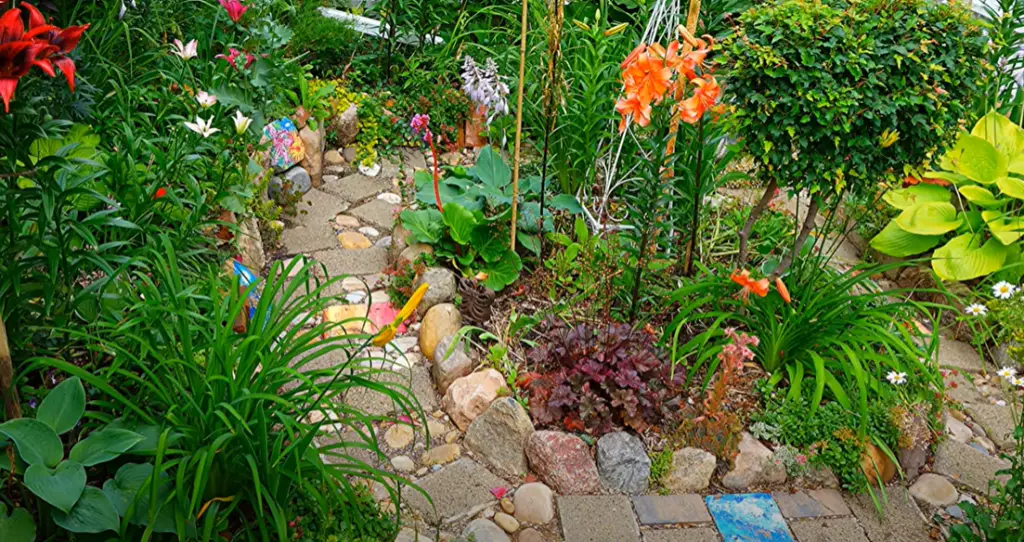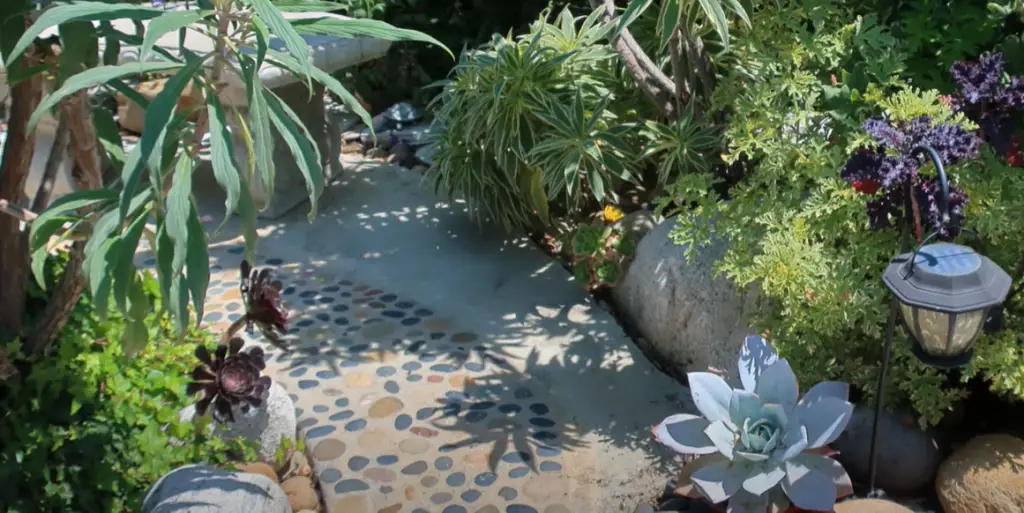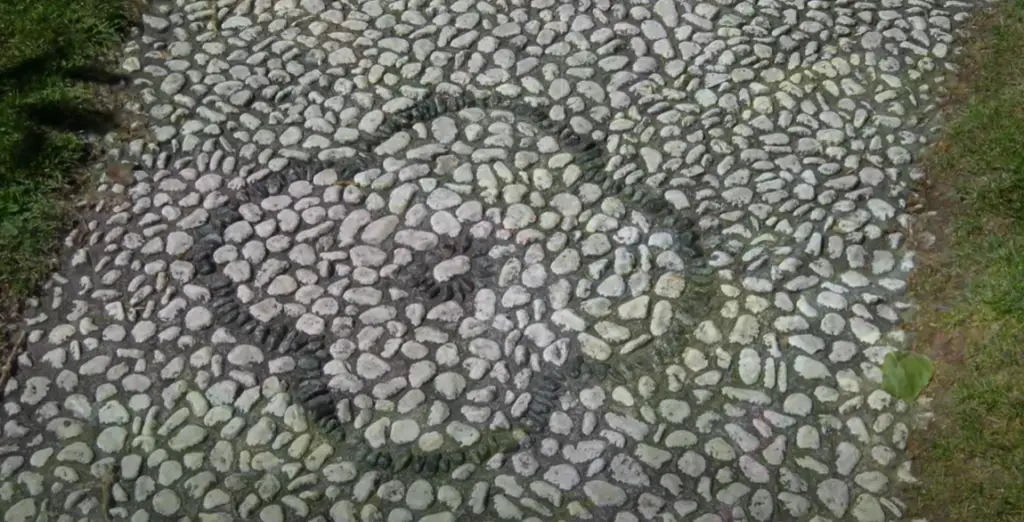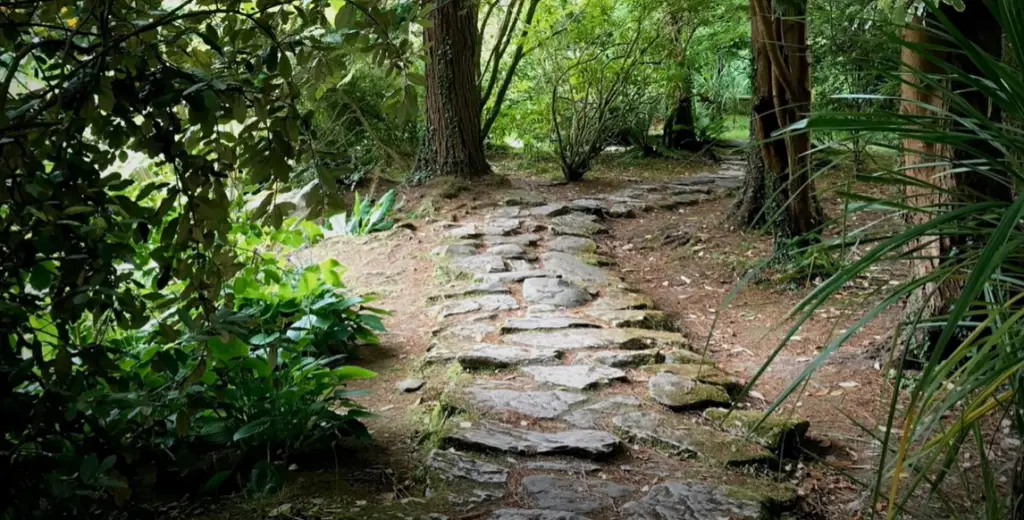When it comes to your home’s exterior, the garden is one of the first places people look. It’s the perfect place to showcase your personality and style and add some extra functionality as well. If you’re looking for modern garden path ideas, you’ve come to the right place! This article will answer common questions about modern garden paths, provide useful tips and ideas, and show you how to create a beautiful pathway that will enhance your home’s exterior.
What are Garden Paths for?
Garden paths are a great way to add beauty and interest to your garden. They can be used as an inviting entranceway, to create a sense of privacy from the outside world, or just for decoration. A well-designed garden path can also provide practical benefits; they allow easy access to sections of your garden that might otherwise be difficult to reach and may help protect delicate plants from trampling feet.
Well-chosen materials will make maintenance easier too; gravel or stones require less upkeep than grassy paths that need regular mowing and edging. Whether you’re looking for a simple winding walkway or something more intricate and grandiose, there’s sure to be something that suits your style. Get inspired and create a garden path that you’ll enjoy for years to come!

How to plan Garden Paths?
Garden paths provide a way to move through your garden and enjoy the beauty of different elements. When planning your garden paths, there are several things that you need to consider.
- Decide on the purpose: The purpose of your garden path will determine the materials used for construction and the overall design. Will it be solely for decorative purposes or will it be used as a walking route? You may also use it as a feature element in your landscape design.
- Determine the length and width: It is important to measure the area where you plan to place the path to ensure that it fits well within the space available. Also, decide on the dimensions of the path such as its length and width.
- Choose the materials: You may opt for natural materials such as bricks, stones or gravel to create a rustic feel or you could use concrete and paving stones for a more modern look.
- Design the layout: Think about how the path should wind through your garden and what type of curves it should have. Consider adding features like steps, benches, or bridges along its route.
- Plant low-lying plants along the sides: Adding grass, flowers, or shrubs can make the path look attractive and will also help to keep it in place by providing stability to its edges.
- Install lighting: If desired, install lighting along the path so you can continue to enjoy your garden even after dark.
Once you’ve taken these steps, you are ready to construct your garden path. Be sure to follow all safety guidelines when working with tools and materials. With a little bit of planning, you can create an attractive garden path that will be the perfect addition to your backyard retreat [1]!

Modern Garden Path Ideas for Contemporary Landscaping
Use Wood to Create Modern Garden Path Designs
Wood is a traditional material for walkways, making it a natural choice for contemporary garden path designs. Wood can be used to create curved lines or angular shapes that echo the modern architecture of your home and landscape. Plus, wood adds warmth and texture to any space. You can also choose different types of wood such as cedar or redwood to bring more dimension and interest to your path design.
Incorporate Stones into Contemporary Paths
Stones are often associated with classic paths, but they can be just as stylish in a modern setting. For example, using large flagstone pavers will give your garden an extra boost of modern elegance. Or you could arrange small stones in an artful pattern that reflects the sleek lines of your landscape. Stones can also be used to create steps or accents along the path, adding depth and texture.
Use Concrete for a Clean Look
Concrete is one of the most popular materials for modern garden paths, as it gives a clean, contemporary look that’s easy to maintain. You can choose from pre-made concrete pavers or have custom designs poured in place. Either way, concrete provides a sleek and sophisticated background for any garden design.
Go Natural with Gravel Paths
Gravel is an increasingly popular choice for modern garden paths because it offers an organic feel without compromising on style. It’s also an inexpensive option that can easily be customized with different colors and sizes of stones. You can also use gravel to add texture and movement to a path, as the small stones will shift with each step.

Create Contemporary Patterns
If you want your garden path to stand out from the crowd, consider using creative patterns in your design. For instance, you could lay pavers in an angular pattern that echoes the lines of your home and landscape or create a bold design with contrasting colors of stone and concrete. You can also incorporate interesting shapes such as circles or stars into your path for a truly unique look.
Replace Curves with Sharp Angles in Stone Walkways
Curved lines are traditional in garden paths, but if you want a contemporary look, opt for angular lines instead. This can be done with both wood and stone walkways. Try using large flagstone pavers to create sharp edges or use smaller stones arranged into an angular pattern. These design elements will give your garden path a modern edge that stands out from the rest.
Install Wood Look Concrete Slabs
Wood look concrete slabs are a great way to get the natural look of wood without maintenance. These slabs come in a variety of designs and colors, allowing you to customize your path to match the style of your landscape. Plus, they’re durable and easy to install, making them an ideal choice for modern garden paths.
Incorporate Lighting into Your Path Design
Adding lights along your garden path can give it a subtle yet sophisticated glow. You can use solar or LED lights to achieve this effect or incorporate built-in lighting elements such as brick walls with embedded lighting fixtures. This will help illuminate the pathway while creating an inviting atmosphere for nighttime entertaining.
Use a Two-Color Combination to Add Modernity
A two-color combination can add a modern twist to your path design. This can be achieved by mixing and matching various materials such as concrete, gravel, stones, and wood. For example, you could use large flagstone pavers in one color combined with small stones or gravel in another shade. This will give your garden path an updated look that is sure to impress.

Add Modern Charm with Rough Surface Cube Pavers
Cube pavers are a great way to add modern charm to your garden path. They come in a variety of sizes and colors, so you can mix and match them to create unique designs. Plus, the rough surface of these cubes gives the path an industrial feel that adds a touch of contemporary charm.
Make Your Garden Path with Uniquely Shaped Pavers
Uniquely shaped pavers are a perfect way to add some visual interest to your garden path. For instance, you could use hexagon-shaped pavers for a modern look or opt for irregularly shaped stones for an organic feel. This is a great way to give your path some personal flair while staying on trend.
Use Colorful Rocks to Create Interesting Designs
Adding colorful rocks along the edges of your path can create interesting designs and textures. You can use small pebbles in different shades arranged into patterns or larger stones with bold hues that contrast with the surrounding landscape. Either way, this will help make your garden path stand out from the rest.
Update Your Old Path with Inlaid Pavers
If you have an old, tired garden path that needs a facelift, consider giving it a modern makeover with inlaid pavers. This can be done by laying down large flagstone pavers and then embedding small stones or rocks into the cracks between them to create a unique pattern. This will give your garden path an updated look while maintaining its classic charm.
Incorporate a Cascading Path Design into a Slow Slope
If your garden has a gradual slope, you can use this to your advantage and create a cascading path design. This can be done by laying down larger stones or pavers in the lower sections of the slope and gradually decreasing the size of the stones as it goes up. This will give your path a dynamic look that will add interest to your landscape.
Opt for Pebbled Paths for an Organic Feel
Pebbled paths are perfect for those who want an organic, natural feel for their garden path. You can opt for small pebbles laid into patterns or use larger stones arranged artistically throughout the pathway. Either way, this will help evoke a sense of tranquility while also providing traction on wet days.

Have Grass Between Concrete Pavers for a Modern Look
For a contemporary look, consider using grass between concrete pavers for your garden path. This will give it an updated feel while still maintaining its classic design. Plus, this type of pathway is easy to install and maintain, making it an ideal choice for modern gardens.
Mix Different Materials to Create a Unique Pathway
If you want your garden path to truly stand out from the rest, then mixing different materials is the way to go. You can use brick pavers with cobblestones or create a mosaic effect with glass tiles and pebbles. Either way, this will give your pathway an eye-catching look that won’t soon be forgotten.
Add Concrete Edging to Your Garden Path
Adding concrete edging to your garden path is a great way to give it a modern, sophisticated look. This type of edging is easy to install and comes in a variety of colors and shapes, so you can customize the design to match your landscape. Plus, this will help keep gravel or stones from washing away when it rains [2].
How to make Garden Paths?
Garden paths are an important part of any garden design. A beautiful, well-designed path can enhance the look of your garden and provide a functional space for you to enjoy the outdoors. Here are some tips for creating beautiful garden paths:
- Plan Ahead – Before you start laying down bricks or stones, it’s important to plan out your path. Determine where you want the path to go and how wide it should be (the standard width is 3 feet). Consider what materials you would like to use – stones, brick, gravel, mulch – and decide on a pattern or design that will make your path stand out from the rest of your garden.
- Measure Out The Area – Once you have decided on a design, measure out the area that will become your path. You’ll need to know how much material you’ll need to purchase for the project. 3. Clear Away Debris – Before laying down any materials for the path, be sure to clear away all debris from the area. This includes removing weeds, rocks, and other objects that could get in the way of your design.
- Layout Your Path – Once you have purchased all of the necessary materials, it’s time to lay out your path! Begin by laying down a layer of gravel as a base and then add in stones or bricks where appropriate (if using brick, make sure to use a mason line for accuracy).
- Install Edging – To keep your path from eroding away, install edging along the perimeter. This can be wooden boards, plastic edging strips, or metal edging strips. Be sure to secure them firmly into the ground for maximum stability.
- Add Finishing Touches – Finally, add some finishing touches to your garden path such as stepping stones or decorative plants. These will give your path a unique and personal touch that shows off your creativity!
With these steps, you should now have a beautiful garden path that adds appeal and functionality to your outdoor space! Enjoy it and explore all the possibilities of what you can do with it!

How to maintain garden paths?
Maintaining garden paths is an important part of keeping your garden looking neat and tidy. Here are a few tips to help keep your paths in optimal condition:
- Clean the path regularly – Remove leaves, debris, and any other materials that accumulate on the path surface. This will help reduce slipping hazards as well as improve the overall aesthetic of the path.
- Trim back vegetation – Overhanging plants can cause damage to pathways and make them slippery when wet. Keeping vegetation trimmed will also help ensure water drainage into nearby soil rather than pooling on top of the path itself.
- Fill in cracks – Cracks in the pathway may be caused by erosion or simply normal wear-and-tear. Filling in these cracks with a high-quality filler will help reduce the risk of further damage and make the path look more attractive.
- Re-apply sealant – Over time, the sealant used to protect your pathways may start to wear off or crack. Make sure to regularly check your paths for signs of wear and tear, and re-apply sealant as needed to keep them looking their best.
- Regularly inspect for pests – Pests such as weeds and insects can cause significant damage to pathways if left unchecked. Make sure to regularly inspect your paths for any unwanted visitors and take appropriate steps to eliminate them before they do too much harm.
Following these tips will help ensure that your garden paths stay in top condition for years to come [3]!
FAQ
What is the best DIY garden path?
The best DIY garden path will depend on your individual needs and style. Some popular materials for creating a garden path include flagstone, gravel, pavers, wood chips, and mulch. These materials are relatively inexpensive and easy to install. Additionally, you can customize the color and shape of your garden path to match your own unique style. No matter what material you choose, make sure it’s durable enough to withstand the elements so that it lasts for many years.
Can I plant flowers directly in the soil around my garden path?
Yes, you can plant flowers directly in the soil surrounding your garden path. However, be sure to choose low-growing plants that won’t interfere with foot traffic or overshadow other nearby plants. In addition, make sure the soil is well-drained so that your flowers can get adequate moisture.
What should I do when my garden path starts to erode?
If you notice that your garden path is starting to erode, there are a few steps you can take to repair it. First, use a rake or shovel to remove any loose material from the area, and then level out the ground with a hoe or trowel. Next, add additional support by laying down landscape fabric and then adding gravel or sand over the top of it. Lastly, fill in any gaps between stones or bricks with mortar or sealant before smoothing out the surface with a broom. This will help prevent further erosion and keep your garden path looking great for many years.
What are some design tips for a garden path?
When designing your garden path, you should consider the size and shape of the area as well as the existing plants and architecture in the space. You can mix different materials to create unique patterns or use stepping stones to add texture. Additionally, consider using lighting along your path to add ambiance and make it easier to navigate after dark. Finally, don’t forget about plants! Use flowers, shrubs, and trees to line the sides of your path for an extra touch of beauty.

What is the cheapest landscape walkway?
The cheapest landscape walkway is probably gravel. Gravel is a versatile material that can be used for pathways of any size, and it’s relatively inexpensive compared to other materials like pavers or flagstones. Additionally, it’s easy to install and maintain. However, keep in mind that gravel can become slippery when wet, so consider adding a non-slip surface if you plan on using it for your garden path.
Should I seal my garden path?
In most cases, yes! Sealing your garden path will help protect the material from water damage and make it easier to clean. Additionally, it will increase the longevity of your path by preventing weeds from growing between stones or bricks. Make sure to use a sealer that is approved for the material you’re using and follow the manufacturer’s instructions for the best results.
What are some safety tips for garden paths?
When planning your garden path, be sure to consider safety first. Make sure walkways are wide enough so that two people can comfortably pass each other, and keep pathways well-lit in case of evening strolls. Additionally, use non-slip surfaces on stairs or ramps to prevent falls. Finally, be mindful of any uneven areas or sharp edges when designing your path, and make sure they’re properly addressed.
How do you make a creative garden path?
There are a few ways to make your garden path stand out. You can mix different materials like gravel, pavers, and wood chips for visual interest. Additionally, using stepping stones is a great way to add texture and character – you can even paint them with unique designs or add embedded lights for an extra special touch. Finally, don’t forget about plants! Use flowers, shrubs, and trees to line the sides of your path for an extra touch of beauty.
How do I build a cheap backyard walkway?
Building a cheap backyard walkway is possible with the right materials and planning. Consider using gravel as a base for your path, as it’s one of the most inexpensive options. You can also try using stepping stones or reclaimed bricks to add texture and interest without breaking the bank. Additionally, you should look for ways to reuse existing materials when possible – for example, by repurposing old logs or pallets for a unique rustic look. Finally, make sure to plan out your path ahead of time so that you don’t end up wasting money on unnecessary materials.
What is the most expensive walkway material?
The most expensive walkway material is often natural stone like flagstone, bluestone, or granite. These materials are incredibly durable and require minimal maintenance, but they come with a hefty price tag. Additionally, you should consider the cost of installation when budgeting for your walkway – it’s usually best to hire a professional for this part of the job. Finally, don’t forget about the cost of sealant if you’re using stone – this will help protect your investment and keep your walkway looking great for years to come.
How do I install garden path pavers?
Installing garden path pavers is relatively easy and can be done in just a few steps. Start by leveling the ground and laying down a layer of gravel for drainage. Next, lay out the pavers in your desired pattern and press them into the soil with a rubber mallet. Finally, add sand to fill any gaps between the pavers and sweep it off to create a smooth surface.
What is a cheaper alternative to concrete walkways?
Gravel is a great alternative to concrete for walkways. It’s much cheaper than concrete and easy to install – plus, it adds an interesting texture that can enhance the look of your garden path. Additionally, you can use stepping stones or repurposed materials like logs or pallets to give your path a unique look. Finally, if you prefer the look of concrete, consider using pavers – they come in a variety of colors and textures and are much cheaper than poured concrete.
Are garden paths environmentally friendly?
Yes! Garden paths provide an easy way to access different parts of your yard while limiting the impact on the environment thanks to their low-maintenance nature. Additionally, using natural materials like gravel or flagstone will help keep your garden path looking great without any harsh chemicals. Finally, adding plants as borders for your path is an easy way to create a green space that’s both beautiful and eco-friendly.
What is the best way to maintain a garden path?
The best way to maintain a garden path is by regularly cleaning it and addressing any repairs as soon as they arise. Sweep the surface of your path frequently to keep it free of dirt and debris, and clear away any weeds that may be growing between the pavers or stones. Additionally, inspect your path periodically for cracks or other damage – if you notice anything, take care of it right away to avoid further issues in the future. Finally, apply sealant every few years to help protect your path from wear and tear.
Useful Video: Top 50+ Best Garden Walkway Ideas /Garden Path Ideas /Garden Pathways /Garden ideas /garden design
Conclusion
Modern garden paths add a special charm and beauty to the home garden. By combining elements from different styles of landscaping, gardeners can create unique paths that are both functional and aesthetically pleasing. From classic brickwork and gravel driveways to modern flagstone pathways and pebble mosaics, there is an ideal garden path for every environment. Garden paths also provide an opportunity for homeowners to showcase their creativity in outdoor spaces. With careful consideration of materials, color schemes, and design features, any gardener can create a stunning garden path with lasting appeal.
References:
- https://www.costafarms.com/get-growing/news/design-a-garden-path
- https://freshpatio.com/modern-garden-path-ideas/
- https://homeguides.sfgate.com/maintain-dirt-path-31101.html










Leave a Reply
View Comments